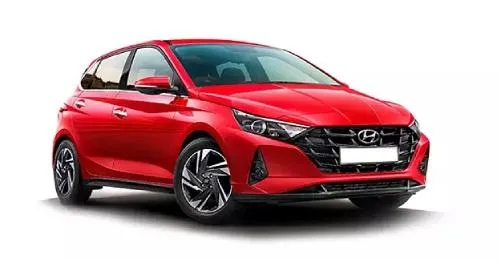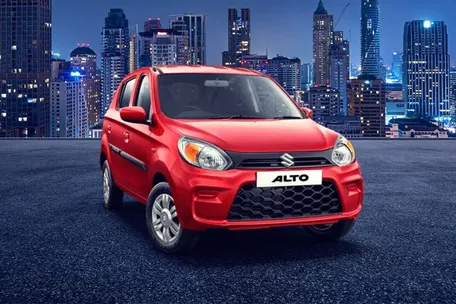The second-generation i20, which was known as the Elite i20, used to be a segment benchmark for its design, quality, and feature list ever since it made its debut in 2014. The i20 has now entered its third-generation state and it takes the segment standards even further with its ever so expansive feature list, striking design, and class-leading interiors. However, the only fly in the ointment is the Hyundai i20 price, which puts it very close to Hyundai’s own sub-4m SUV, the Venue.
Hyundai i20 Exterior
The Hyundai i20 new model is, hands down, one of the most well-designed hatchbacks in the country. It is largely based on the international model, but it does miss out on full-LED headlamps with LED arrays (it gets a projector setup with LED bulbs instead) and bigger alloy wheels. The tip forward stance and the large frameless grille makes it look aggressive from the front. Moreover, the aggressive lines, Z-shaped LED taillamps, and factory-fitted side skirting makes the i20 all the more appealing and, of course, more desirable.
Hyundai i20 Variants
The Hyundai i20 variants are as follows: Magna, Sportz, Asta, and Asta (O). The Hyundai i20 on-road price might seem a bit too much, but, for your money, the top-spec Asta (O) trim gets you an electric sunroof, cruise control, push-button start with keyless entry, 7-speaker BOSE audio system, a 10.25-inch infotainment screen, 16-inch alloy wheels, and all the necessary equipment by segment standards.
Hyundai i20 Interior
As is a norm with newer generation models, the third-generation Hyundai i20 gets an all-new interior layout with a 10.25-inch infotainment screen sitting on top of the dashboard. The fit-and-finish and the overall quality of materials are still the nicest in the class. Space inside is good too, with the i20 now featuring the best in class legroom and knee room at the back. The boot space, however, is a bit down as opposed to other cars in the segment.
Hyundai i20 Engine Specifications & Performance
The i20, in essence, gets the same engine-gearbox combinations as its sibling, the Venue. The entry-level variants are powered by a 1.2-litre four-cylinder petrol engine, good for 82bhp (87bhp with CVT) and 115Nm of torque. It comes mated to either a 5-speed manual or a CVT automatic gearbox. Next is a 1.0-litre T-GDI motor – producing 118bhp and 172Nm – that is paired to either a 6-speed clutchless manual or a 7-speed DCT gearbox. Lastly, there’s a 1.5-litre four-cylinder diesel engine too, which makes 99bhp and 240Nm of torque. It only comes mated to a 6-speed manual gearbox.



